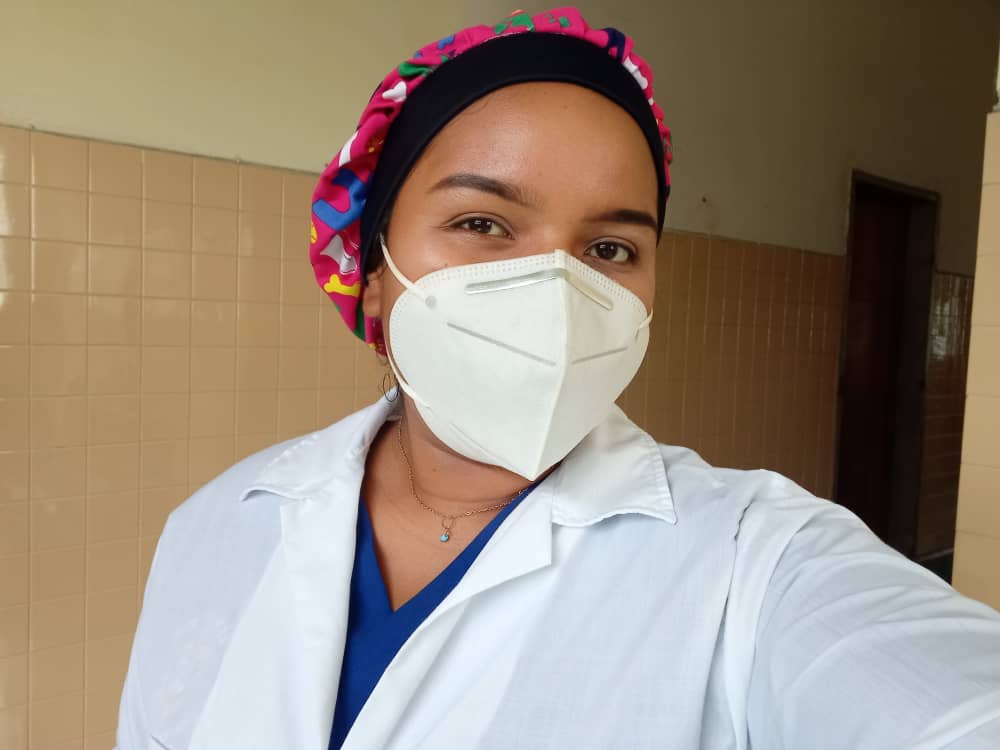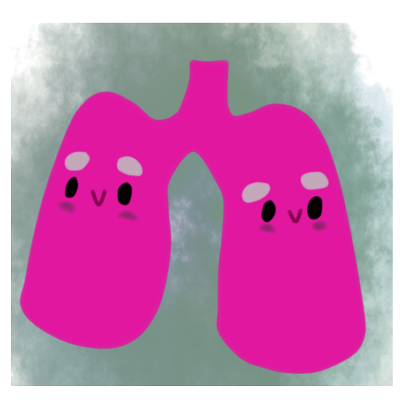
El día de hoy durante mis prácticas hospitalarias tuve la oportunidad de visitar el servicio de neumonología del hospital Dr. Luis Gómez López, donde realicé mi primera guardia como estudiante de enfermería.


.jpeg)

El servicio de neumonología se encarga del diagnóstico y tratamiento, de todas aquellas patologías que afectan al sistema respiratorio, en este servicio podremos encontrar pacientes con distintos diagnósticos como ejemplo; neumonía, EPOC (enfermedad pulmonar obstructiva crónica), asma, fibrosis quística, derrame pleural, neumotórax, hemotórax, TBC (tuberculosis), bronquitis, pleuritis, entre otras patologías.


Nuestro sistema respiratorio es muy importante, está compuesto por la cavidad oral, fosas nasales, laringe, faringe, tráquea, diafragma (musculo de la respiración) y pulmones este se encarga de realizar el intercambio gaseoso, permite el suministro de sangre oxigenada a todos los órganos y tejidos del cuerpo, así como también permite el desecho del CO2 es decir de dióxido de carbono, a través de el respiramos por lo tanto es vital.


Las enfermedades respiratorias pueden causar complicaciones potencialmente mortales en el paciente lo cual disminuye la calidad de vida.
.jpeg)

La enfermera en el servicio de neumonología cumple diversas funciones como lo es; la administración de tratamiento, oxigenoterapia el cual consiste en administrar oxígeno en concentraciones superiores de la que se encuentra en el ambiente con el objetivo de prevenir o tratar la hipoxia en el paciente, la fisioterapia respiratoria; estas son un conjuntos de técnicas (drenaje postural, percusión, vibración) que permiten mejorar la ventilación o función respiratoria del paciente.
.jpeg)

En pacientes con drenaje torácico, es importante valorar la herida de inserción del catéter, observar la permeabilidad del drenaje, y cuantificar la cantidad eliminada, por otra parte se debe realizar el control de líquidos ingeridos y eliminados así como también el control de signos vitales.
.jpeg)

El proceso de atención en enfermería de calidad está destinado a la recuperación y mejora de las condiciones de vida en cada paciente.
.jpeg)



ENGLISH
Today, during my hospital internship, I had the opportunity to visit the pneumonology service of the Dr. Luis Gómez López hospital, where I made my first shift as a nursing student.
The pneumonology service is in charge of the diagnosis and treatment of all those pathologies that affect the respiratory system, in this service we can find patients with different diagnoses as an example; pneumonia, COPD (chronic obstructive pulmonary disease), asthma, cystic fibrosis, pleural effusion, pneumothorax, hemothorax, TB (tuberculosis), bronchitis, pleurisy, among other pathologies.
Our respiratory system is very important, it is composed of the oral cavity, nasal passages, larynx, pharynx, trachea, diaphragm (breathing muscle) and lungs, this is in charge of gas exchange, it allows the supply of oxygenated blood to all organs and tissues of the body, as well as allows the disposal of C02, that is, carbon dioxide, through which we breathe, therefore it is vital.
Respiratory diseases can cause life-threatening complications in the patient, which decreases the quality of life.
The nurse in the pneumonology service fulfills various functions such as; the administration of treatment, oxygen therapy which consists of administering oxygen in concentrations higher than that found in the environment in order to prevent or treat hypoxia in the patient, respiratory physiotherapy; These are a set of techniques (postural drainage, percussion, vibration) that allow to improve the ventilation or respiratory function of the patient.
In patients with thoracic drainage, it is important to assess the catheter insertion wound, observe the permeability of the drain, and quantify the amount eliminated; on the other hand, control of ingested and eliminated fluids should be performed, as well as control of vital signs.
The quality nursing care process is aimed at the recovery and improvement of the living conditions of each patient.

La información que acabas de leer es de mi aprendizaje en las prácticas del hospital Dr. Luís Gómez López.
El separador que acabas de ver es de mi autoridad. Las imágenes que acabas de apreciar son de mi autoridad. / The separator you just saw is from my authority. The images you just appreciated are my authority.

Muchas gracias a por todos leerme!/Thank you very much to all for reading!
Estudiante de enfermería/Nursing student.

Homa @marile21 me gusto mucho tu post. Muchas gracias por explicarnos sobre el sistema respiratorio y las atenciones que brindan las enfermeras a los pacientes internados en esta área. Elegiste una hermosa carrera felicidades
Muchas gracias por leer el post, es una carrera hermosa! Saludos!
Buenas, Su post ha sido propuesto para ser votado a lo largo del día por el witness @cervantes. Un saludo.
Muchas gracias!